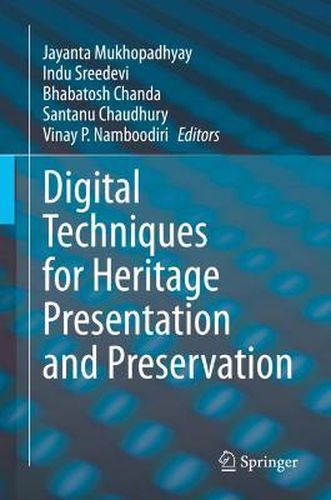Readings Newsletter
Become a Readings Member to make your shopping experience even easier.
Sign in or sign up for free!
You’re not far away from qualifying for FREE standard shipping within Australia
You’ve qualified for FREE standard shipping within Australia
The cart is loading…






This title is printed to order. This book may have been self-published. If so, we cannot guarantee the quality of the content. In the main most books will have gone through the editing process however some may not. We therefore suggest that you be aware of this before ordering this book. If in doubt check either the author or publisher’s details as we are unable to accept any returns unless they are faulty. Please contact us if you have any questions.
This book describes various new computer based approaches which can be exploited for the (digital) reconstruction, recognition, restoration, presentation and classification of digital heritage. They are based on applications of virtual reality, augmented reality and artificial intelligence, to be used for storing and retrieving of historical artifacts, digital reconstruction, or virtual viewing.
The book is divided into three sections: Classification of Heritage Data presents chapters covering various domains and aspects including text categorization, image retrieval and classification, and object spotting in historical documents. Next, in Detection and Recognition of Digital Heritage Artifacts , techniques like neural networks or deep learning are used for the restoration of degraded heritage documents, Tamil Palm Leaf Characters recognition, the reconstruction of heritage images, and the selection of suitable images for 3D reconstruction and classification of Indian land mark heritage images. Lastly, Applications of Modern Tools in Digital Heritage highlights some example applications for dance transcription, architectural geometry of early temples by digital reconstruction, and computer vision based techniques for collecting and integrating knowledge on flora.
This book is mainly written for researchers and graduate students in digital preservation and heritage, or computer scientists looking for applications of virtual reality, computer vision, and artificial intelligence techniques.
$9.00 standard shipping within Australia
FREE standard shipping within Australia for orders over $100.00
Express & International shipping calculated at checkout
This title is printed to order. This book may have been self-published. If so, we cannot guarantee the quality of the content. In the main most books will have gone through the editing process however some may not. We therefore suggest that you be aware of this before ordering this book. If in doubt check either the author or publisher’s details as we are unable to accept any returns unless they are faulty. Please contact us if you have any questions.
This book describes various new computer based approaches which can be exploited for the (digital) reconstruction, recognition, restoration, presentation and classification of digital heritage. They are based on applications of virtual reality, augmented reality and artificial intelligence, to be used for storing and retrieving of historical artifacts, digital reconstruction, or virtual viewing.
The book is divided into three sections: Classification of Heritage Data presents chapters covering various domains and aspects including text categorization, image retrieval and classification, and object spotting in historical documents. Next, in Detection and Recognition of Digital Heritage Artifacts , techniques like neural networks or deep learning are used for the restoration of degraded heritage documents, Tamil Palm Leaf Characters recognition, the reconstruction of heritage images, and the selection of suitable images for 3D reconstruction and classification of Indian land mark heritage images. Lastly, Applications of Modern Tools in Digital Heritage highlights some example applications for dance transcription, architectural geometry of early temples by digital reconstruction, and computer vision based techniques for collecting and integrating knowledge on flora.
This book is mainly written for researchers and graduate students in digital preservation and heritage, or computer scientists looking for applications of virtual reality, computer vision, and artificial intelligence techniques.